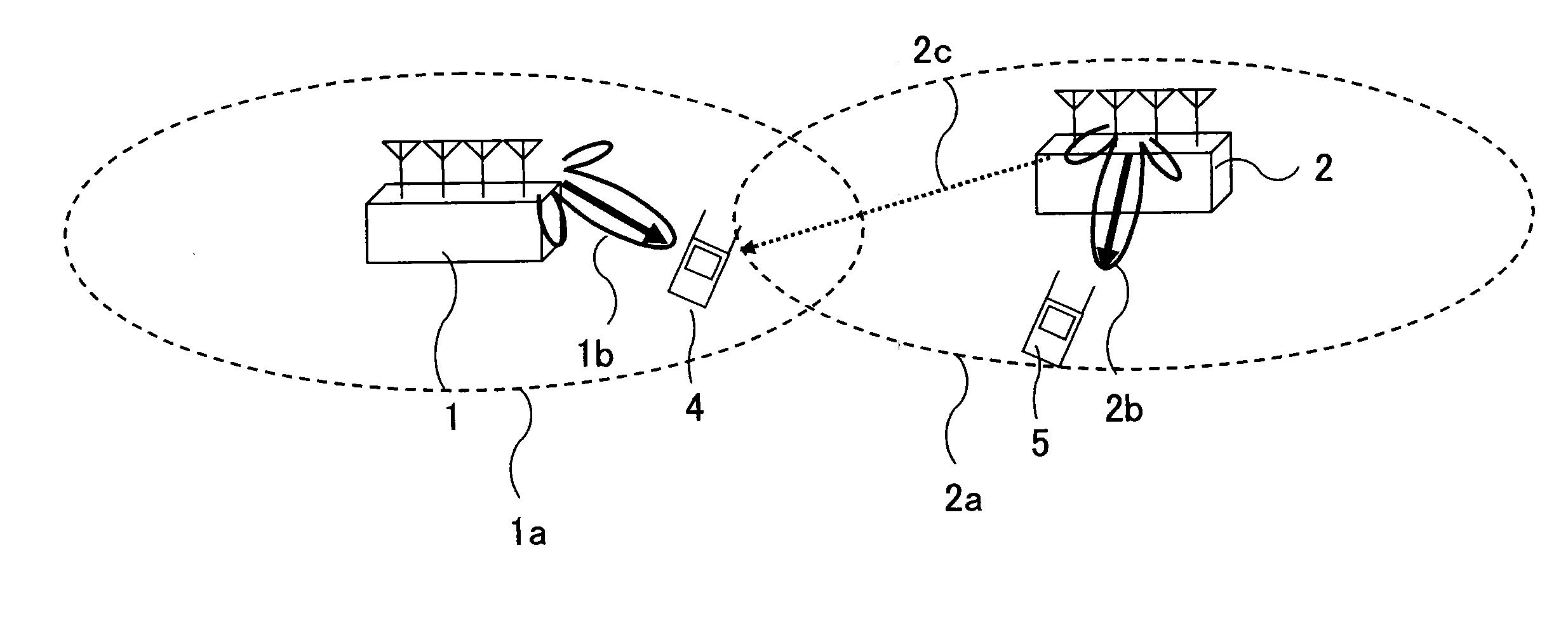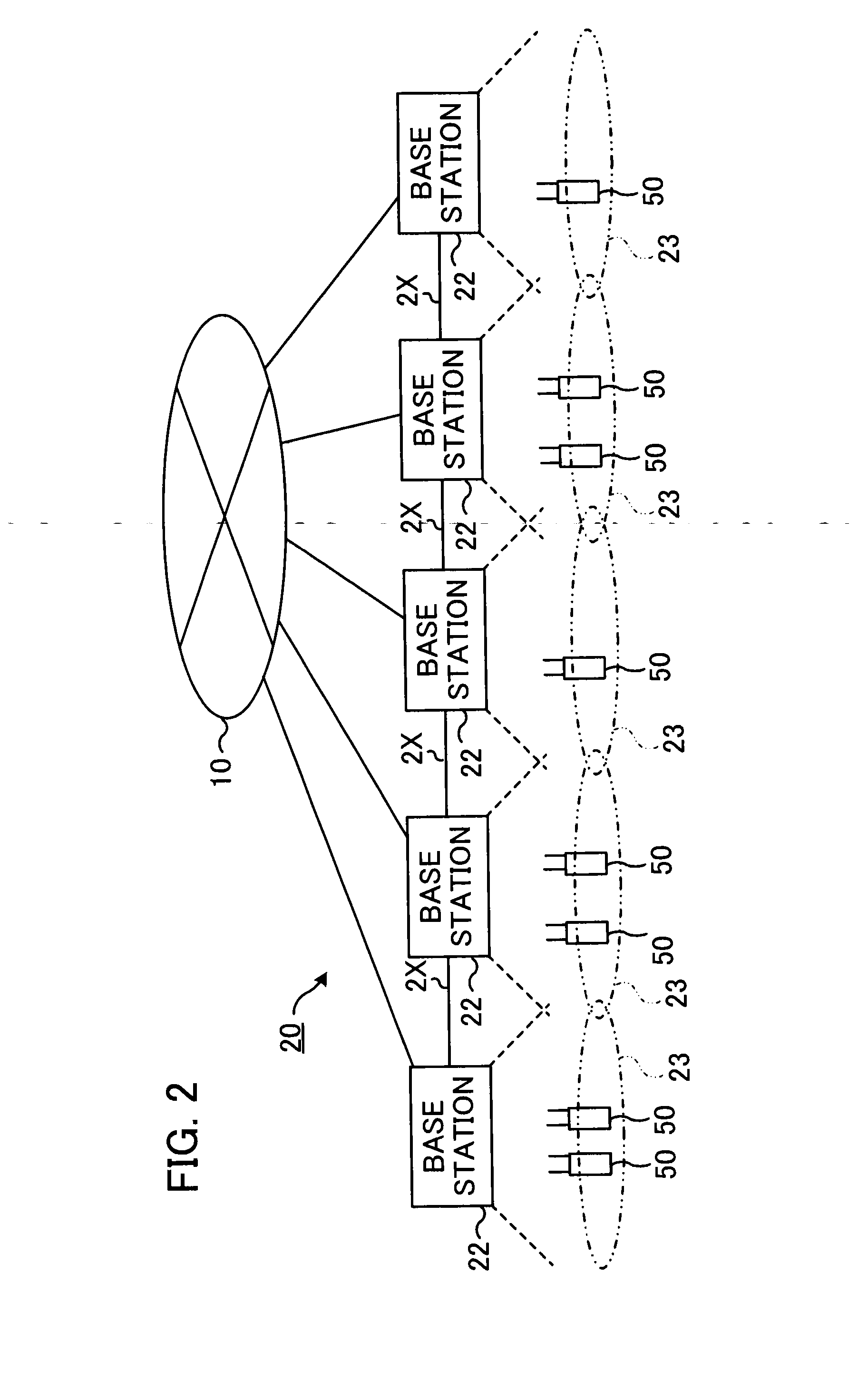Radio communication system, radio base station, and mobile terminal
a radio communication system and mobile terminal technology, applied in the field of radio communication systems, radio base stations, mobile terminals, can solve the problems of reducing the efficiency of processing in the overall radio communication system, and achieve the effect of improving reception quality and enhancing interference suppression effects at mobile terminals
- Summary
- Abstract
- Description
- Claims
- Application Information
AI Technical Summary
Benefits of technology
Problems solved by technology
Method used
Image
Examples
first embodiment
[0047]The radio communication system according to the first embodiment is related to interference alignment (IA) described above. FIG. 3 shows outline of downlink channel characteristics in the radio communication system. For the purpose of facilitating understanding, FIG. 3 shows only three radio base stations 22 (a first radio base station 221, a second radio base station 222, and a third radio base station 223) and five mobile terminals 50 (a first mobile terminal 501, a second mobile terminal 502, a third mobile terminal 503, a fourth mobile terminal 504, and a fifth mobile terminal 505).
[0048]The first mobile terminal 501 and the second mobile terminal 502 are located in the cell 231 of the first radio base station 221, and are connected to the first radio base station 221. The first radio base station 221 actually downlinks data signals to the first mobile terminal 501 and the second mobile terminal 502. The third mobile terminal 503 and the fourth mobile terminal 504 are loca...
second embodiment
[0099]In the first embodiment, interference-suppression-capability information of each mobile terminal 50 is shared in collaborating radio base stations 22, and the IA decider 28 of a radio base station 22 that is an interfering base station for a mobile terminal 50 decides whether or not IA should be executed for the mobile terminal 50.
[0100]However, another radio base station 22 that is the desired base station for a mobile terminal 50 may decide whether or not IA should be executed for the mobile terminal 50. A second embodiment will be described next. FIG. 8 shows the structure of a radio base station 22 according to the second embodiment. In the second embodiment, the structure and operation of the mobile terminal 50 may be the same as those of the first embodiment shown in FIG. 6.
[0101]In FIG. 8, the same reference symbols are used to identify elements commonly used in FIG. 7, and these elements will not be described in detail. As shown in FIG. 8, the radio base station 22 acc...
third embodiment
[0107]In the first and the second embodiments, the interference-suppression-capability calculator 62 of each mobile terminal 50 calculates the number A of interfering radio wave beams of which interference can be suppressed by the interference rejection combining processor 55 (the number of degrees of spatial freedom of the interference rejection combining processor 55). In addition, a signal (interference-suppression-capability information) indicating the number A of degrees of spatial freedom calculated by the interference-suppression-capability calculator 62 is supplied to the SC-FDMA modulator 70, and then is sent by radio to the radio base station 22 (desired radio base station) by means of the SC-FDMA modulator 70 and the radio transmitter 72.
[0108]However, each mobile terminal 50 may send, to its desired radio base station 22, interference-suppression-capability information indicating the number B of the reception antennas 52 of the mobile terminal 50, instead of interference...
PUM
 Login to View More
Login to View More Abstract
Description
Claims
Application Information
 Login to View More
Login to View More - R&D
- Intellectual Property
- Life Sciences
- Materials
- Tech Scout
- Unparalleled Data Quality
- Higher Quality Content
- 60% Fewer Hallucinations
Browse by: Latest US Patents, China's latest patents, Technical Efficacy Thesaurus, Application Domain, Technology Topic, Popular Technical Reports.
© 2025 PatSnap. All rights reserved.Legal|Privacy policy|Modern Slavery Act Transparency Statement|Sitemap|About US| Contact US: help@patsnap.com



